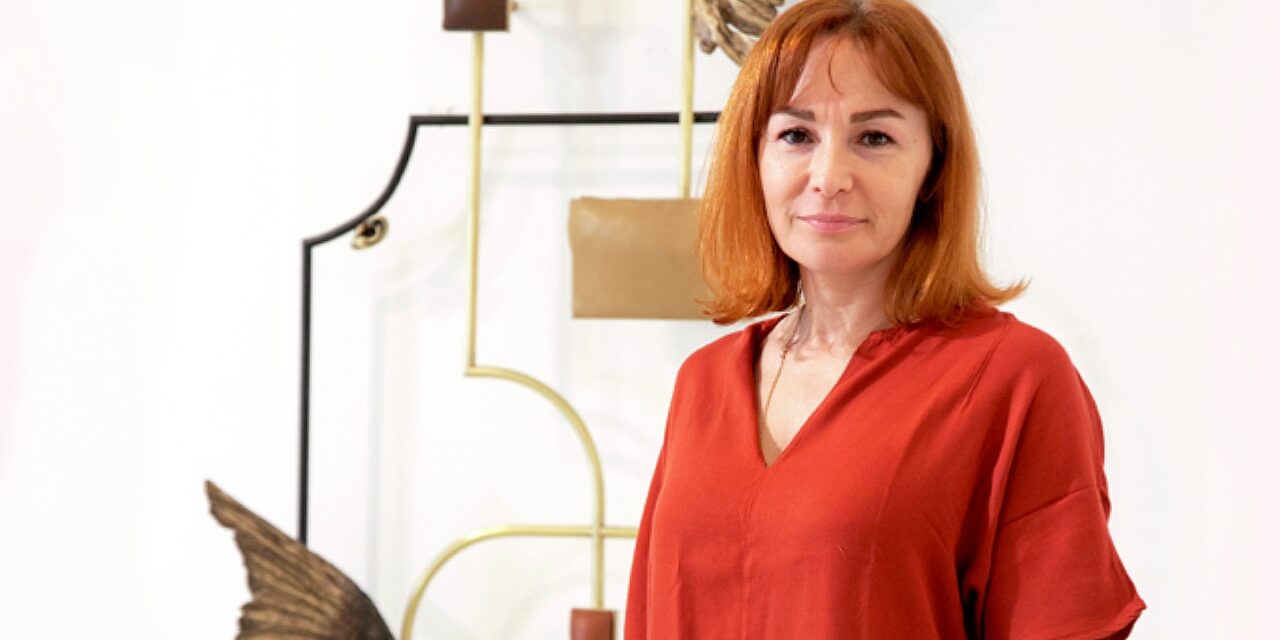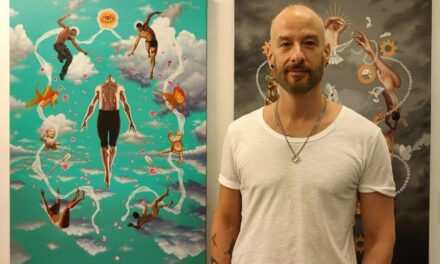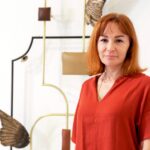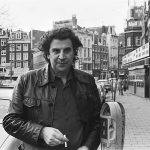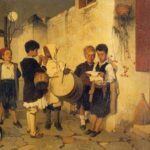Pavlina Vagioni’s artistic practice unfolds at the intersection of mythology, language, psychology, and material experimentation. Working across sculpture, installation, sound, video, and digital media, she approaches ancient myths not as historical narratives but as living symbolic systems—repositories of archetypes that continue to shape contemporary experience. Her work draws deeply from classical sources, etymology, and Jungian thought, translating research into immersive environments where form, sound, and material act as carriers of meaning.
Central to her practice is the belief that language and matter are inseparable. Words, sounds, and materials are treated as active forces—capable of awakening memory, triggering recognition, and revealing hidden structures of identity and transformation. Living between Athens and Houston, Vagioni’s work is shaped by a dynamic dialogue between rootedness and distance, memory and experimentation.
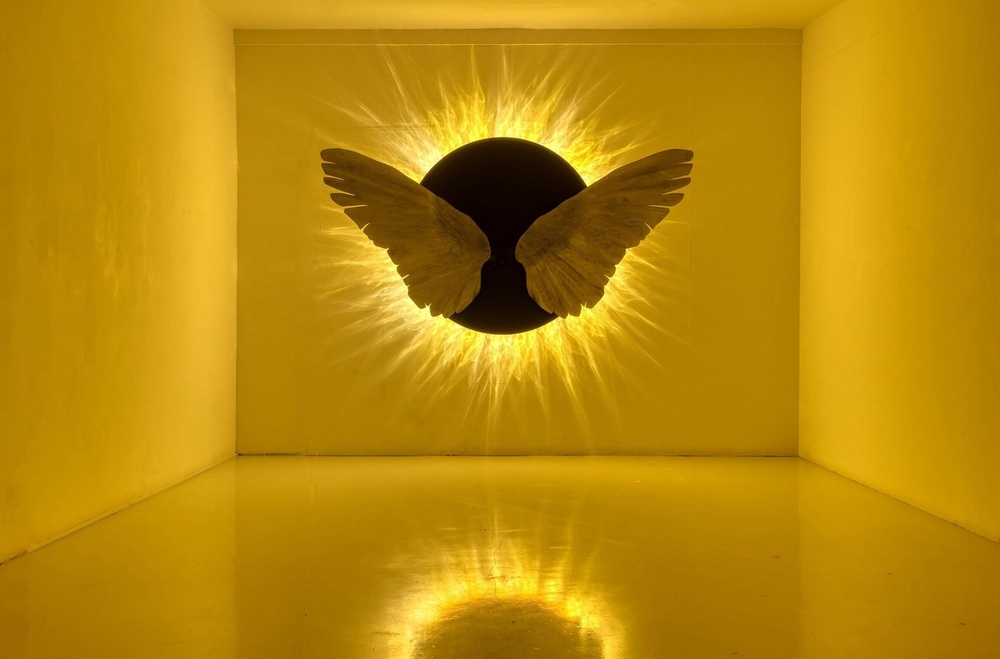
Paulina Vagioni (b. 1975, Athens, Greece) studied painting, sculpture, ceramics, and scenography at the Athens School of Fine Arts, graduating with highest honors at the postgraduate level in 2016. She also trained for over a decade as a classical soprano soloist, studying piano, music theory, and composition—an interdisciplinary background that continues to inform her practice.
Her work is included in the permanent collection of MOMus—Museum of Contemporary Art in Thessaloniki and has been awarded the Jury Prize by the Lawndale Art Center in Houston. She has held solo exhibitions at Opening Gallery (New York), Carillon Gallery (Fort Worth), TANK Space (Houston), and Kappatos Gallery (Athens), with an upcoming exhibition at Tube Factory Artspace (Indianapolis).
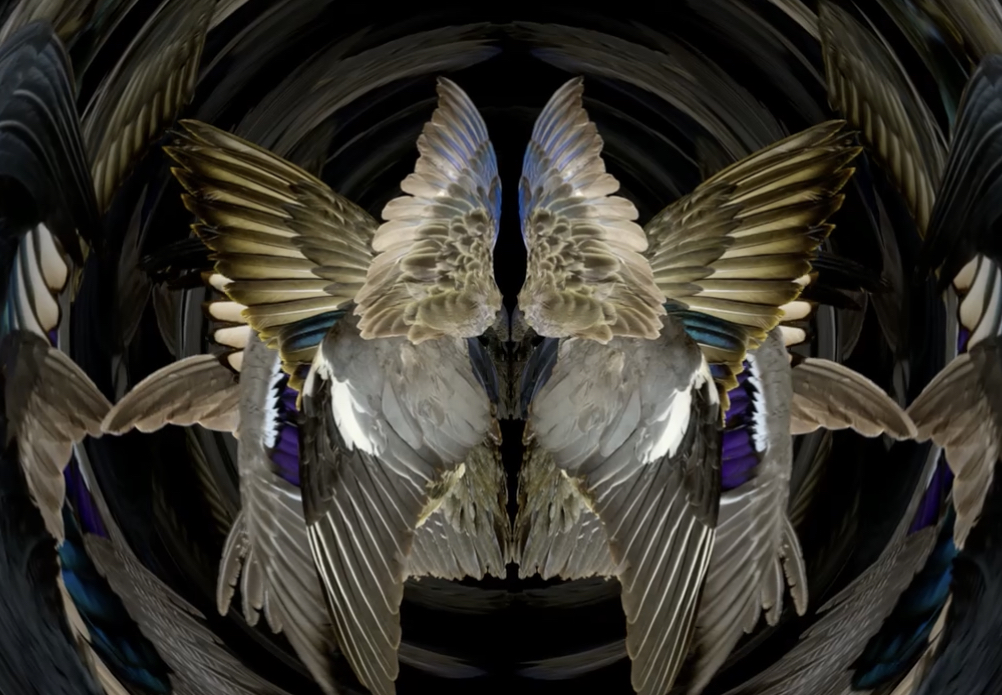
Her interview with Greek News Agenda* offers insight into her research-driven yet intuitive process, her engagement with myth as a universal psychological language and transformative force—one that continues to speak to the complexities of contemporary identity and human consciousness.
As an artist, you work in an interdisciplinary way. What role does research play in your work?
My process always begins with research. I usually start by studying passages from Ogygia by Athanasios Stagirites that relate to the subject I am exploring at a given moment. This 19th-century work compiles Mediterranean mythology in remarkable detail, drawing from both ancient and later sources. It is a true treasure: it has never been translated and remains largely unknown outside Greece. Within it, I often encounter versions of myths that have been lost or significantly altered in modern retellings.
My research, however, is not limited to philology. It extends into Jungian psychology and the interpretation of myths as archetypes and symbolic systems. From there, a process of translation begins: how an idea can become form, color, fabric, or sound. One example is the Kerkis works from the Athena series. While studying the ancient weaving tool, I discovered that the sound it produced closely resembled that of insects. This sonic association led me to create works with symmetrical forms that can be read as both anthropomorphic and insect-like.
In essence, I am not interested in retelling a myth, but in creating the conditions for an encounter with it—allowing the viewer to come into contact with what the myth reveals about human experience.
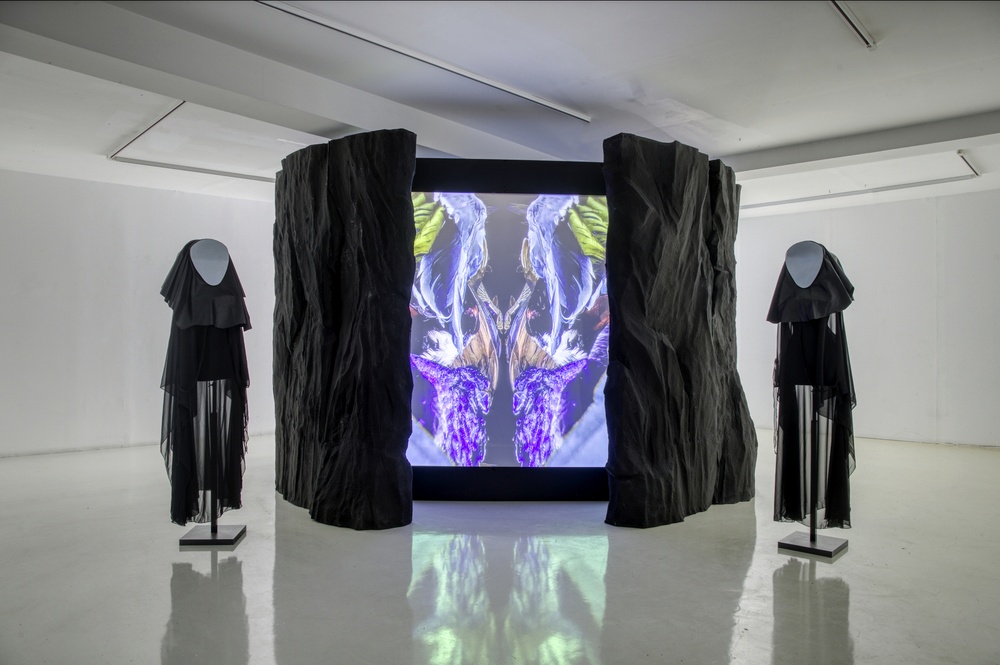
How do etymology and language become integrated into your work?
Language is always my starting point. I am deeply interested in etymology, because it is where a word’s original meaning resides, before it becomes obscured by layers of interpretation. Antisthenes said, “Wisdom is to be found in the investigation of names,” and I fully agree: a word often reveals the deeper essence of the thing it names.
A characteristic example is Medusa. Her name derives from the verb μέδω, meaning “to govern” or “to protect.” This etymology creates a fascinating paradox: Medusa bears a name associated with protection, yet she is represented as a monster who must be destroyed. The paradox becomes clearer when we recall the apotropaic function of the Gorgoneion in ancient Greece, where her image was used as a protective symbol on temples, houses, and shields. The gaze that petrified the enemy was transformed into a force of protection.
This insight became the starting point for a series of works in which the myth is inverted: snakes with bodies made of braided synthetic hair and heads of cast aluminum shaped like hands mimicking snakes. From a distance, the work appears threatening; up close, it reveals a marionette-like construction. The viewer is invited to ask: what is it that we truly fear?
Another example is the installation Proteus Within, where this linguistic logic is translated into sound. The composition is based on the musical notes E–C–C–E, which in the Anglo-Saxon system correspond to the Greek Mi–Do–Do–Mi and spell the Latin word ECCE, meaning “behold.” “Behold” alludes to Proteus, the god who constantly changes form. It is an invitation to look beyond transformation and recognize essence within change. Sound, voice, and word become a single body—a linguistic experience that activates sensation and thought simultaneously.
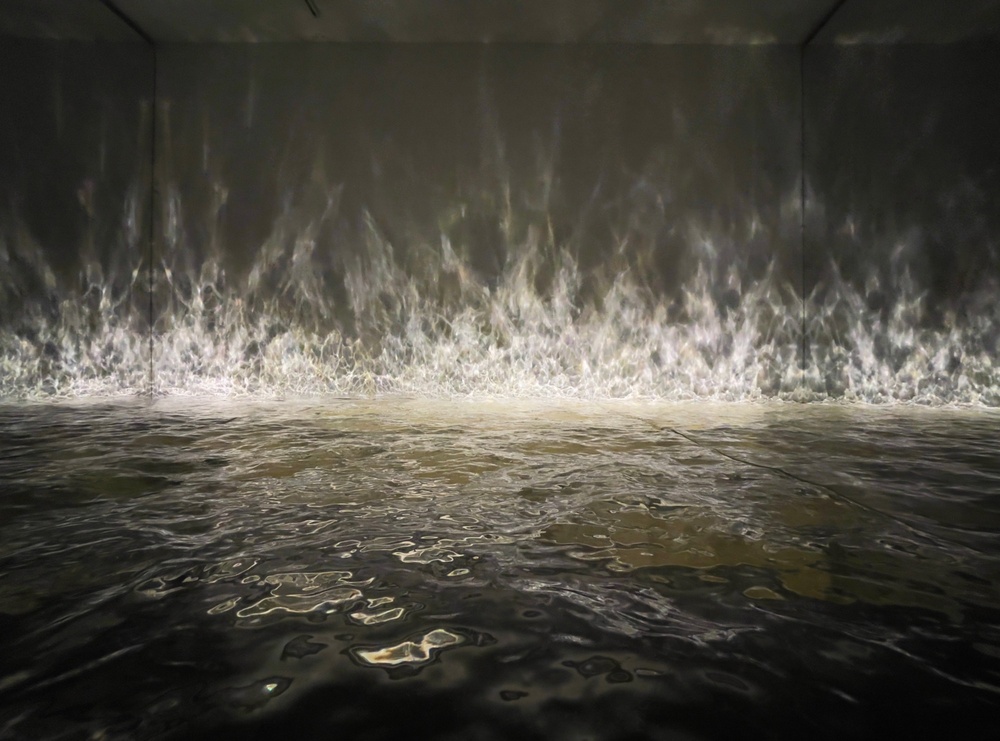
Archetypal figures from Greek mythology often inspire your work (Medusa, Sirens). What leads you to reinterpret these mythic figures? What qualities make them timelessly relevant?
My relationship with myths is both personal and profound. Through my journey in psychoanalysis, I came to understand that myths are not distant narratives, but living systems of transformation. They reflect inner states, fears, desires, and our need to make sense of what cannot be fully understood.
Carl Jung described archetypes and symbols as ways through which the psyche communicates the unconscious to consciousness. In this sense, myths function as mirrors of ourselves. They are timeless because they articulate our inner structure; the archetypes they contain act as guides in the psyche’s evolutionary process.
Medusa represents fear. Proteus, the eternally transforming god, embodies the fluidity of identity in the contemporary world—an experience amplified through our digital selves. It is noteworthy that a research at Stanford titled The Proteus Effect examines how digital identities influence behavior. Chiron, in turn, symbolizes healing through empathy.
I do not approach myths as something “ancient” or exclusively “Greek,” but as a global archive of human experience that speaks directly to the present. Myths survive because they remain open to reinterpretation. When an artist approaches them anew, they do not revive them—they activate them. Each time someone recognizes a part of themselves within a myth, it comes alive again.

How does materiality activate memory in your work?
For me, material is never neutral. Every material carries meaning, whether through direct reference or symbolic resonance. In the sculpture Chiron, for example, the horse’s skin resembles human skin, while the stitching with wire thread evokes sutured wounds. It is simultaneously body and trace of healing—a material metaphor for the relationship between pain and care.
In Kerkis, memory is embedded in the very act of weaving. The knitted and embroidered elements come from different techniques created by other women, which I incorporated into the works. This collective manual labor—the touch of many hands—carries with it a memory of community, continuity, and female creation.
Memory is born through sensory experience and completed in consciousness. Although each work is grounded in research, the act of making unfolds through a more intuitive, almost alchemical process. The work first communicates through color, form, and texture, and only later—if the viewer chooses—reveals its conceptual layers.
Music, sound, and digital media are integrated into your work. How do they expand the viewer’s experience?
Having studied classical singing for over a decade, I use my voice not as a vehicle for musical performance, but as material that connects sound to body and space. Sound, light, and digital media are forms of matter. I treat them not as supplementary elements, but as active agents that shape perception and convey meaning beyond language.
In Fuga delle Sirene, the video component of the installation Isle of the Sirens, my voice is combined with recordings of seascapes, birds, and whales, creating an immersive environment. The work also included an interactive performance in which visitors’ faces were reflected onto the masks of performers who followed them. This mirrored the psychological mechanism of the mythic Sirens, who called sailors by name—a moment of recognition and identification.
In Proteus Within, kinetic lighting creates the illusion of a continuous transformation from sea to fire: a dark, fluid surface dissolving into golden flames, symbolizing both Proteus’s mutability and the fluid nature of human identity. Light is never static; it transforms space and perception.
This orchestration of sound, light, and image shares a structural affinity with music. Music unfolds over time, while an image is grasped instantaneously—yet both rely on rhythm, intensity, and silence. Through their convergence, the viewer does not simply observe the work, but experiences it holistically—with body, memory, and consciousness.
You moved to Houston, USA, a few years ago. How has this relocation influenced you as an artist?
Houston is a multicultural city, full of energy, that encourages experimentation and constant renewal. There, I encountered people from diverse cultural backgrounds, an experience that expanded the way I understand creation and collaboration. Life in Houston gave me the freedom to rethink my practice from the ground up. The distance—both geographical and psychological—created the space to experiment without feeling constrained by expectations.
A significant milestone in my trajectory was the realization of my first large-scale public work in Houston: an eight-meter installation for the ION building. I collaborated closely with engineers and technicians at the ION Prototyping Labs, using technologies such as laser cutting. The difference in working rhythm was striking. In the United States, planning begins much earlier, a shift that provided me with valuable tools for managing complex, large-scale projects.
Athens, by contrast, is the place of memory and inner processing. It is where I return to deepen my work. This oscillation between distance and rootedness keeps my practice alert and alive. I now move between Athens and Houston as if between two systems of reference. One city gives me roots; the other, a horizon. Somewhere between them, the space where I truly create takes shape.
*Interview by Dora Trogadi
TAGS: ARTS

